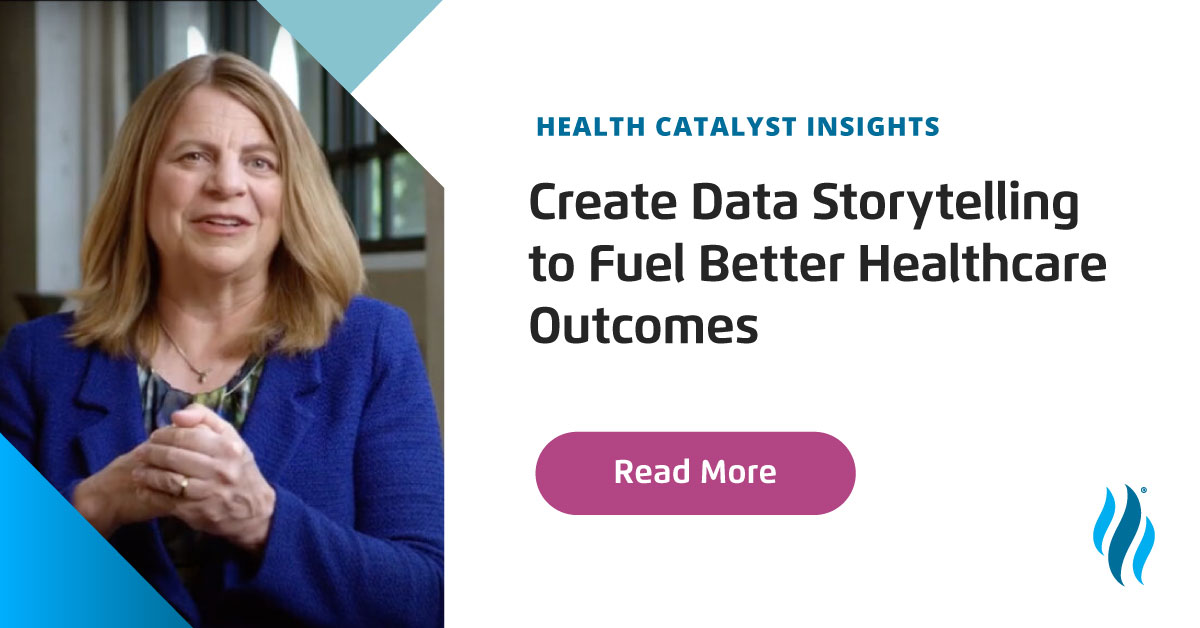Even in a data-driven healthcare ecosystem, analytic insights alone won’t sufficiently drive outcomes. Instead, the content behind these numbers, the data story, fuels real transformation. The Healthcare Analytics Summit 2022 explored the human side of data and the people and communities behind the healthcare outcomes.
 Download
Download

When most healthcare professionals hear “data,” they likely picture charts and dashboards. But data done right tells a much more compelling story; one that includes context, history, and even emotion and creates a narrative about the patients, communities, and care teams behind it.
The 2022 Healthcare Analytics Summit (HAS 22) explored the human side of analytics, asserting that without a human element, even the most advanced data and analytics techniques won’t sufficiently drive outcomes. One significant way the healthcare community can humanize its data is by looking beyond the metrics and seeing the larger story—the people behind the numbers and findings and what matters most to them.
Story means seeing the whole patient.
Whether from a healthcare leadership perspective—such as Penny Wheeler, MD, former CEO, Allina Health—or a creative viewpoint—such as Matthew Luhn, former Lead Animator and Storyteller, Pixar Studios—storytelling emerged as an indispensable tool in creating data-driven outcomes.
While the COVID-19 pandemic response initially put healthcare data in the spotlight, it was the stories behind the analytic insights that heightened the public and industry awareness. To understand the pandemic challenges, providers and customers needed real context around the people and places confronting the virus.
For example, Dr. Wheeler shared that as Allina Health was in the early months of the COVID-19 response, in May 2020, George Floyd was murdered in a part of Minneapolis close to the health system’s headquarters. The resulting wave of civil unrest further taxed the organization and its community logistically and emotionally as protests and riots swept through the city.
The bigger picture: responding to the aftermath of the George Floyd murder amid the pandemic.
While the data showed operational, clinical, and financial performance through this period, the context of George Floyd’s murder added a human layer to the information. The story gave magnitude to the data and became the driver of Allina’s pledge to fight COVID-19 and racism—the “why” behind a person-centered improvement initiative with the following aims:
That pledge by Allina and others led to a comprehensive scorecard for patient-reported outcomes with the following attributes:
By looking for the story behind data, Allina separated the “why” from the “what,” a key element in building trust among care teams, provider trust in the data, and true patient engagement. The story explained the more significant goal to everyone using the data.
As healthcare leaders like Dr. Wheeler recognize the importance of telling a story with their data, they can look to other industries to understand how to create rich, compelling narratives. This is where Luhn came in at HAS 22. “Story is king,” he explained. It’s what makes information meaningful and what sticks with people.
Luhn advised attendees to wrap data in a story that’s personal and impactful. Like Dr. Wheeler’s account of the George Floyd murder hitting Allina’s community during the pandemic, the human perspective on the health system’s environment gives audiences meaning behind any analytics insight. If, for example, metrics showed an emergency department surge in May 2020, data users would understand the context around the numbers and create a better-informed response.
Story, explained Luhn, drives people to make decisions based on how the narrative makes them feel. Humans tend to make decisions when someone or something impacts their emotions. The data can help rationalize and guide the decision, but the personal connection drives the action. Furthermore, universal stories—the desire for love, safety, or freedom or the fear of failure or abandonment—connect across ages, genders, and cultures. Numbers and reports are less likely to drive meaningful change than understanding the people and circumstances behind them.
Telling a story with and around data, said Dr. Wheeler, keeps people at the center of healthcare decision making. “Never forget whom you’re serving and why,” she stated, making the case for keeping the personal and emotional aspects along with the data.
Luhn echoed Dr. Wheeler’s sentiment when he explained that people will remember how stories made them feel. And the best story will always win.
Would you like to learn more about this topic? Here are some articles we suggest: